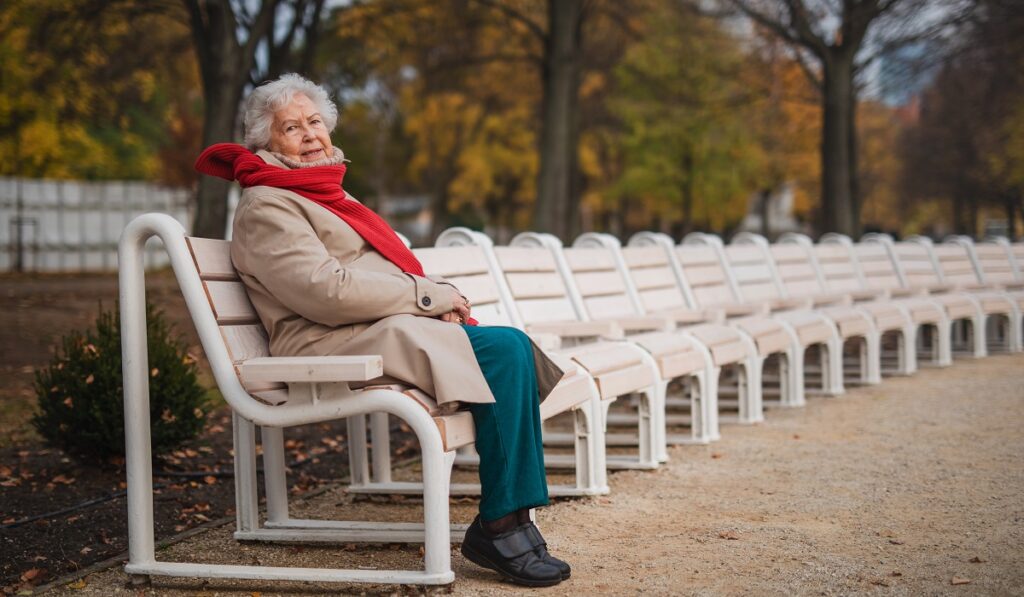Loneliness and stroke are no longer considered unrelated health issues. Public health experts and clinicians have long recognized that chronic social isolation can raise the risk of cardiovascular and neurological conditions—especially among older adults. But this isn’t just a theory. Across the U.S., families and caregivers are witnessing this connection in real time.
Older adults living alone, managing complex health conditions, and experiencing limited interaction often undergo a decline that isn’t always visible at first—but eventually shows up in emergency rooms. Stroke, in particular, is one of the most serious and life-altering outcomes of ongoing emotional and social neglect.
This blog explores what health research now confirms: that loneliness isn’t just an emotional experience—it’s a contributing medical factor, especially when it comes to stroke risk. We’ll also examine how structured social environments, like assisted living, can serve as a critical tool in both prevention and recovery.
Key Takeaways
- Loneliness and Stroke are closely linked—chronic loneliness increases stroke risk and worsens recovery.
- Scientific studies show that emotional isolation affects brain and heart health in aging adults.
- Many older adults live alone or feel disconnected, even when surrounded by people.
- Early signs like appetite changes, forgetfulness, or mood shifts may signal deeper emotional distress.
- Senior living communities, like Serenity Living, offer structured support, social connection, and 24/7 care.

What the Study Reveals About Loneliness and Stroke Risk
Health professionals have long suspected that loneliness has deeper effects than just mood or quality of life. Today, research confirms that suspicion. A large-scale study conducted by the Harvard T.H. Chan School of Public Health analyzed data from over 12,000 adults aged 50 and older. The researchers were specifically looking at how chronic loneliness—not just occasional feelings of being alone—relates to long-term health risks. The results were deeply concerning.
The study found that persistent loneliness was linked to a 56% higher risk of stroke. This number remained significant even after accounting for common stroke risk factors like smoking, diabetes, hypertension, obesity, and depression. In other words, emotional isolation translates into biological stress that impacts long-term health.
Even more importantly, the researchers discovered that people who continued to report loneliness over multiple check-ins during the study had the highest risk of stroke. This means it’s not just about feeling alone once in a while. When loneliness becomes a pattern over months or years, it begins to physically affect the body, especially the cardiovascular and neurological systems.
These findings emphasize what many caregivers and families see but don’t always have the words to describe: a loved one who withdraws socially may not just be “sad”—they may be at greater risk of serious illness, even without visible symptoms.
But here’s the good news: loneliness is not a permanent condition, and there are real solutions that can make a difference. Strong daily routines, consistent social interaction, and a sense of safety and belonging can all help protect against the effects of loneliness. For many older adults, senior living communities offer exactly that—a balance of privacy, connection, and support that helps them feel included and safe, every single day.
Why Loneliness Often Goes Unnoticed — Until It Affects Health
Loneliness doesn’t always show up in obvious ways. Loneliness isn’t always tied to being physically alone—it often stems from a lack of meaningful interaction or emotional presence. Many older adults may appear “fine” on the surface, while underneath, they’re coping with feelings of invisibility or emotional isolation.
According to Michigan Medicine , nearly 1 in 2 American adults report feeling lonely, and older adults are among the most affected. The problem isn’t just emotional — it’s physical. Prolonged loneliness activates stress responses in the body, raising blood pressure, increasing inflammation, and weakening the immune system — all of which can contribute to a higher risk of stroke and other cardiovascular issues.
Still, this is not a hopeless situation. Families and healthcare providers are becoming more aware of these silent signs. Proactive steps like maintaining regular communication, encouraging involvement in meaningful activities, and considering structured support — such as a senior living environment — can restore the connection many older adults are missing.
In a small assisted living community, for example, residents can share meals, take part in activities, and build daily routines that protect both emotional well-being and long-term health. These changes may seem simple, but for someone at risk, they can be lifesaving.
Why Seniors Often Don’t Speak Up About Feeling Lonely
Many older adults don’t openly express that they’re feeling lonely — not because they don’t feel it, but because they’ve learned to hide it. Some don’t want to burden their families. Others believe that “this is just part of getting old.” And for those who’ve lost a spouse, a friend group, or even the ability to drive, the silence often grows deeper over time.
This hidden loneliness can go unnoticed, even by close family members. It often presents subtly: changes in appetite, less interest in hobbies, or more time spent sleeping.
But the key takeaway here isn’t just about the risk—it’s about prevention. While loneliness may seem like an emotional state, it demands a practical, proactive response. Daily interaction, structure, and purpose are not luxuries in old age—they are protective health factors. For many families, this is where assisted living becomes a real solution—not just a place to live, but a path to reconnecting with life.
The Role of Daily Routines and Social Connection in Stroke Recovery and Prevention
Loneliness and stroke are more connected than many families realize. When seniors lack daily structure or meaningful interaction, they may face higher risks—not just emotionally, but physically. The CDC highlights that stroke prevention depends on stable routines, stress management, and social engagement.
Without connection, routines often unravel. Skipping meals, sleeping irregularly, or withdrawing from hobbies may seem minor, but these patterns gradually increase vulnerability—especially for stroke.
In senior living communities like Serenity Living, daily rhythms offer more than just comfort—they offer protection. Residents enjoy balanced meals, participate in movement and memory activities, and experience joyful, shared moments that reestablish structure and purpose.
These consistent routines are a quiet defense against the cycle of loneliness and stroke. It’s not just about care—it’s about restoring what isolation has taken away: connection, stability, and joy.
What Families Can Do About Loneliness and Stroke Risk
When loneliness affects an older loved one, families often feel powerless—but small, thoughtful actions can have a lasting impact. And given the proven link between loneliness and stroke, early support matters more than ever.
The first step is paying attention without judgment. Changes in sleep, appetite, or social behavior are often the first signs. Gently asking questions like, “How are you really feeling these days?” or “Do you still feel connected to the people around you?” opens the door to honest conversation.
Next, help them build or rebuild routines that involve interaction. This could include regular video calls with grandchildren, joining a local senior center, or attending weekly community events. Even consistent phone calls from family make a difference.
Families should also consider the environment. If your loved one spends most of their time alone at home, it may be time to explore safer, more socially active senior care options. A senior living community—like Serenity Living—offers consistent companionship, daily social opportunities, and help with daily activities that promote overall well-being.
No one needs to navigate this alone. With small steps and thoughtful support, families can be a powerful part of the solution.
Why Senior Living Communities Can Be a Protective Factor
When families begin looking into options to support an aging loved one, it’s often because they’ve seen a change—more isolation, missed meals, or trouble keeping up with routines. And with the well-documented connection between loneliness and stroke, the environment seniors live in becomes a critical factor in long-term health.
Senior living communities, such as Serenity Living in Palm Beach Gardens, offer more than just assistance. They provide daily structure, built-in opportunities for companionship, and a consistent rhythm of social and physical engagement. Whether it’s shared meals, light group exercise, or planned activities that promote cognitive health, these experiences reduce isolation without feeling forced.
A 2022 report by the American Heart Association stated that strong social ties can be just as important as managing blood pressure or cholesterol in preventing stroke and heart conditions. In a supportive living environment, older adults aren’t left to figure it all out alone—they’re part of something steady, social, and safe.
At Serenity Living, residents receive not only help with daily activities, but also the intangible, powerful benefit of connection: daily interaction with caring staff and fellow residents who know them by name.
How Serenity Living Supports Residents Emotionally and Physically
At Serenity Living, the approach to care goes beyond helping with daily tasks—it’s about creating an environment where residents feel understood, safe, and connected. This becomes especially important when addressing the deep emotional and physical toll that loneliness and stroke can have.
Residents live in a setting designed to encourage social engagement and consistent routines. Whether it’s sharing meals with peers, participating in music or movement activities, or simply having regular conversations with familiar staff, the focus is on rebuilding a sense of purpose. These simple, everyday interactions can reduce isolation and improve mood, which in turn, can support cardiovascular health.
Physically, Serenity Living offers 24/7 support with activities of daily living, medication management, and coordination with healthcare providers. Emotional support is just as present—residents are cared for by a team that values patience, empathy, and respect. Staff are trained to notice subtle changes in behavior or routine, and family members are kept involved throughout the care journey.
Conclusion
The link between loneliness and stroke is real—but it doesn’t mean decline is inevitable. With the right support, seniors can regain stability, connection, and peace of mind.
If your loved one is beginning to show signs of emotional or physical strain, don’t wait for a crisis. Serenity Living offers a safe, compassionate environment designed to support the whole person—physically, emotionally, and socially.
Contact Serenity Living today to explore care that truly nurtures body, mind, and spirit.
Frequently Asked Questions about Loneliness and Stroke
Can loneliness lead to stroke?
Yes, studies now confirm that there’s a strong link between loneliness and stroke risk. Chronic emotional isolation can trigger physiological stress responses in the body—raising blood pressure, inflammation, and disrupting heart health. Over time, this can increase the likelihood of stroke, especially in older adults. The good news? Loneliness is not a permanent condition. With consistent social engagement and supportive care, stroke risks can be significantly reduced.
Can loneliness increase stroke risk by up to 56%?
Yes. A large-scale study by Harvard found that adults experiencing persistent loneliness had a 56% higher risk of stroke compared to those who didn’t. What’s important to remember is that this risk is tied to ongoing, unaddressed emotional disconnection. Early action—like improving routines, encouraging connection, or exploring senior living communities—can help lower this risk and improve long-term well-being.
What are 85% of strokes caused by?
Approximately 85% of all strokes are ischemic, meaning they occur when blood flow to the brain is blocked. While physical risk factors like high blood pressure and diabetes play a major role, emotional factors such as chronic stress and loneliness are now also recognized as contributors. Creating a stable, emotionally supportive lifestyle is a powerful step in prevention.
Can moving to senior living reduce the impact of loneliness?
Absolutely. One of the most effective ways to address chronic isolation in older adults is through structured social environments. At communities like Serenity Living, residents enjoy shared meals, group activities, and meaningful interaction every day. These moments do more than lift spirits—they can directly support brain and heart health by reducing the effects of loneliness over time.
Is it ever too late to reverse the effects of loneliness?
Not at all. Even after a period of isolation, older adults can regain emotional strength and physical stability through intentional changes. Something as simple as joining a daily activity or building a new friendship can make a difference. With the right support—whether from family or a caring senior living community—healing and hope are always possible.


